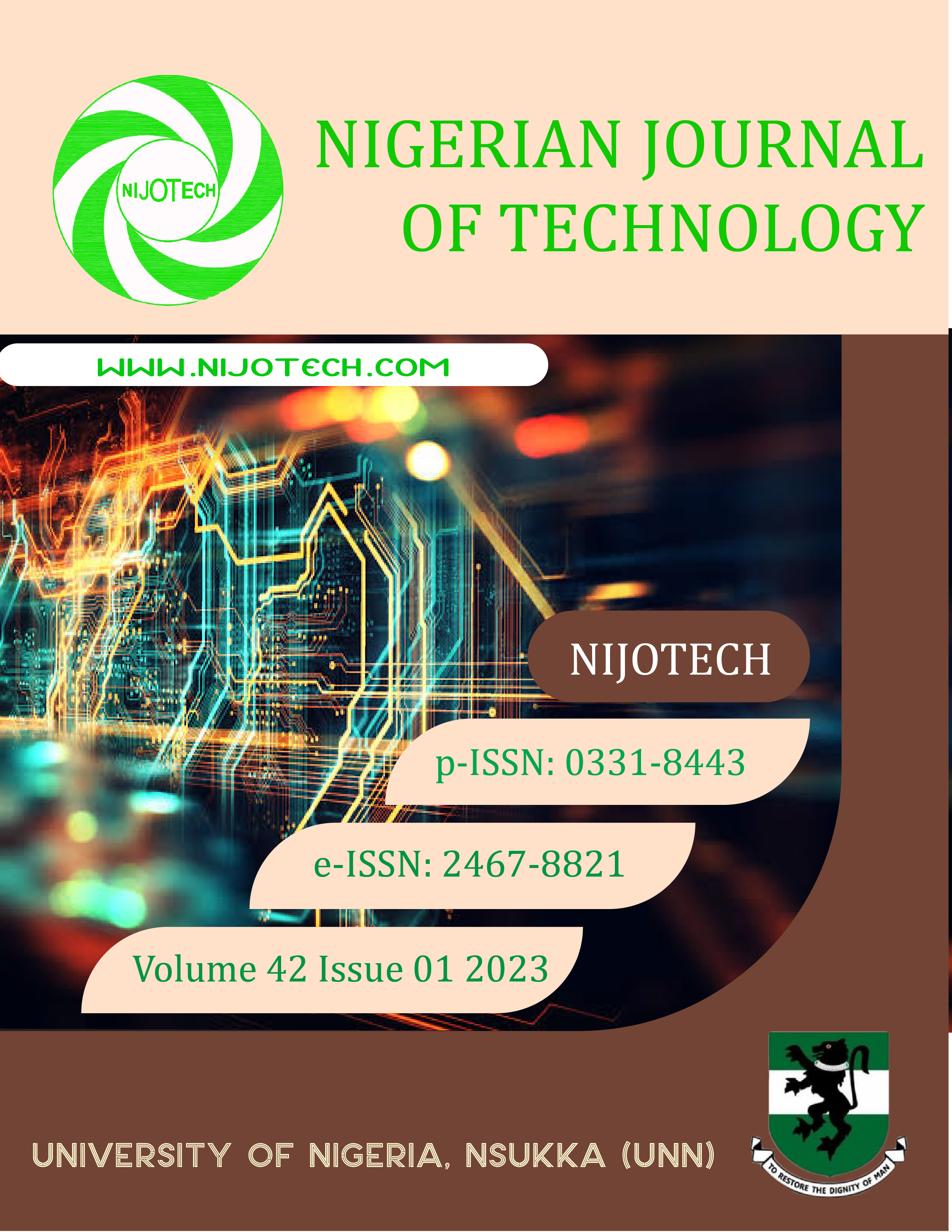SLOPE STABILITY ASSESSMENT OF SOME WASTE ROCK DUMPS AT A TYPICAL GOLD MINE IN GHANA
DOI:
https://doi.org/10.4314/njt.v42i1.10Keywords:
Factor of Safety, Janbu Generalised Method, Waste Rock Dumps, Slope Stability, Pseudo-StaticAbstract
Mining results in both economic and uneconomic materials being generated. The uneconomic materials (wastes) are stacked in a convenient place for further use or stored permanently as a slope or embankment. In Ghana, a typical gold mine set up dumping sites to accommodate the waste generated from its operations. Samples were collected from three waste dumps and tested in the laboratory, and the parameters obtained were used as input for 2D model development. The Factor of Safety (FS) of the three waste dumps were determined using the Janbu Generalised slope stability analysis method. Path and slope surface (circular and non-circular) search methods were used for the three cases. The FS for the waste dumps were determined and ranged from 1.61-2.74, 1.49-2.50 and 1.32-2.10 under dry, static and pseudo-static loading conditions, respectively. These values exceed the minimum requirements of 1.1-1.5 for stability conditions. The geometry of the waste dumps, Suraw Waste Dump (SWD), is within the standard and hence, does not require reshaping, while the slope angles for the remaining waste dumps, Tano Waste Dump (TWD) and Akoti Waste Dump (AWD) need to be reshaped to achieve the proposed slope angle of 3H:1V (18.40 degrees) as stipulated in the mine’s Environmental Impact Statement (EIS).
Downloads
Published
Issue
Section
License
Copyright (c) 2023 Nigerian Journal of Technology

This work is licensed under a Creative Commons Attribution-NonCommercial 4.0 International License.
The contents of the articles are the sole opinion of the author(s) and not of NIJOTECH.
NIJOTECH allows open access for distribution of the published articles in any media so long as whole (not part) of articles are distributed.
A copyright and statement of originality documents will need to be filled out clearly and signed prior to publication of an accepted article. The Copyright form can be downloaded from http://nijotech.com/downloads/COPYRIGHT%20FORM.pdf while the Statement of Originality is in http://nijotech.com/downloads/Statement%20of%20Originality.pdf
For articles that were developed from funded research, a clear acknowledgement of such support should be mentioned in the article with relevant references. Authors are expected to provide complete information on the sponsorship and intellectual property rights of the article together with all exceptions.
It is forbidden to publish the same research report in more than one journal.











